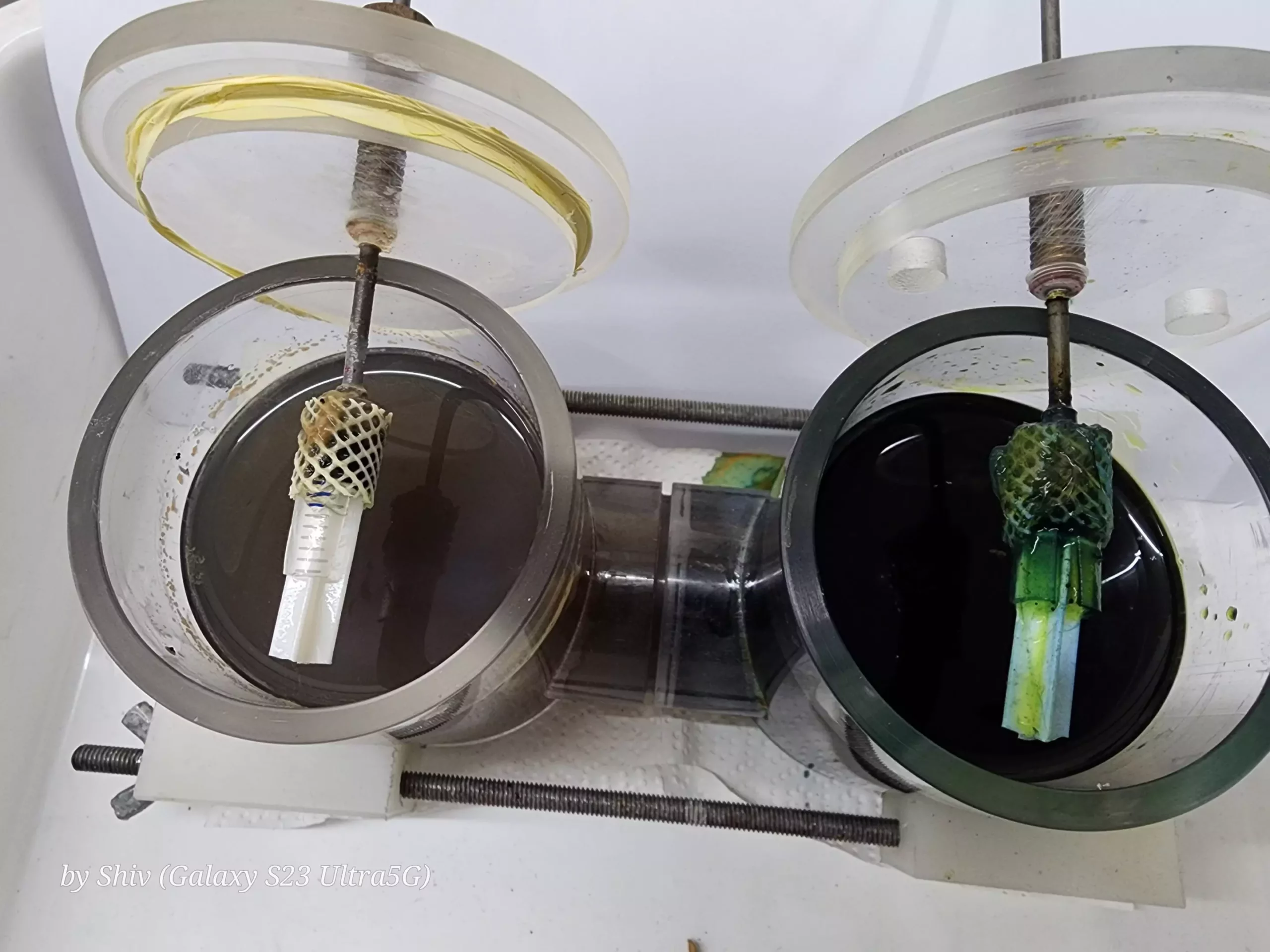As we stand at a pivotal moment in history, the pressing need for innovative solutions to environmental challenges has never been clearer. In a world grappling with pollution and finite resources, the quest for sustainable energy sources has led to the exploration of unconventional avenues. Among these, microbial fuel cells (MFCs) represent a fascinating intersection of biotechnology and renewable energy. A recent study in the Chemical Engineering Journal has shed light on the advancements in MFC technology, particularly by utilizing new capacitive electrodes that promise to harness the potential of waste as a valuable energy resource.
Microbial fuel cells operate on a simple yet revolutionary premise: they convert the metabolic activities of microorganisms into electrical energy. By placing microorganisms—typically bacteria—within a system where they can metabolize organic waste, we can tap into the electrons produced during this biological process. These electrons flow through an external circuit, generating electricity that can be harvested for various applications.
In this regard, a study focusing on capacitive MFCs has taken this technology further by introducing groundbreaking electrode materials known as NiO-N-CNF/ACB electrodes. These specialized electrodes are engineered to enhance the bioelectrochemical processes that power MFCs.
The performance metrics associated with the capacitive NiO-N-CNF/ACB electrodes have demonstrated remarkable efficiency in power generation. An open-circuit potential (OCP) of 0.8 volts and a staggering power density of 2,900 mW/m³ indicate a significant advancement in energy output. But beyond the impressive figures, these results illustrate a pivotal moment in how we can harness waste as a resource.
The electrodes’ unique interactions with wastewater promote the growth of robust biofilms composed of electrogenic bacteria. The thicker the biofilm, the better the electron transfer, which is crucial for effective power generation. This process not only enhances energy production but also demonstrates notable wastewater treatment capabilities.
One standout benefit of this innovative approach is the dual function of MFCs: effective wastewater treatment alongside energy generation. The integration of the NiO-N-CNF/ACB electrodes has led to a remarkable 74% reduction in chemical oxygen demand (COD), a vital measure of organic pollutants in wastewater. This reduction not only highlights the MFC’s potential as a cleaner technology but also presents an opportunity for wastewater treatment facilities to lower energy costs.
This dual-function nature underscores the transformative potential of MFCs. They aren’t merely a means to generate energy; they are part of a broader strategy to combat pollution and promote sustainability. As they streamline the energy recovery process while simultaneously cleaning wastewater, MFCs might be the answer we seek in our quest for greener technology.
The synthesis of NiO-N-CNF/ACB electrodes through suspension polymerization has led to a breakthrough in MFC design. This method produces fixed-packed bed electrodes that maximize surface area, providing more catalytic sites for the growth of electroactive bacteria. Consequently, this facilitates enhanced electron transfer and streams of electricity generated from waste.
Nickel oxide’s integration into the electrode composition is pivotal in fostering efficient electron transfer, thereby amplifying power output. Additionally, these biocompatible materials are optimized to interact effectively with microbial communities, leading to accelerated electron transfer and better overall system performance.
The implications of these advancements in MFC technology reach far beyond the laboratory. By revolutionizing how we perceive both waste and energy production, there lies an opportunity to reshape our environmental practices. The ability to turn wastewater treatment plants into self-sufficient energy producers could pave the way for a more sustainable future.
The integration of specific bacterial species, such as Raoultella ornithinolytica and Serratia marcescens, which thrive in the biofilm on these electrodes, plays an essential role in optimizing the energy conversion process. These bacterial communities are not just bystanders; they are integral to the efficiency and productivity of the MFC systems.
As we look ahead, the potential of MFCs like those incorporating NiO-N-CNF/ACB electrodes seems promising. We stand on the verge of a paradigm shift where waste becomes a valuable resource rather than a burden to be managed. This technology opens avenues for further research aimed at improving power efficiency, optimizing biocompatibility, and scaling up production.
The dual benefits of energy generation and pollution reduction position MFCs as a pivotal player in a sustainable future. The vision of sending wastewater treatment facilities towards energy self-sufficiency is not just a dream; it is an attainable reality within our grasp.
The emergence of microbial fuel cells marks a critical evolution in how we harness resources from our environment. By embracing and optimizing technologies that treat waste and produce energy simultaneously, we are not simply solving environmental challenges; we are redefining our relationship with waste, viewing it through the lens of opportunity rather than obstruction. The advances in MFC technology reflect a larger, necessary shift towards sustainability, echoing the idea that the things we discard can fuel our future.


Leave a Reply